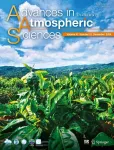(Press-News.org)
Researchers from Nagoya University Institute of Transformative Biomolecules (WPI-ITbM) in Japan and their colleagues have identified and derivatized a chemical compound that effectively regulates the density of stomata in model plants. Stomata are crucial for water regulation. As the environment grows increasingly unpredictable, managing water consumption for crops during droughts through chemical methods will become increasingly important. The results of their study were published in Nature Communications.
Manipulating protein interactions using chemical compounds is revolutionizing biology because it allows researchers to influence complex processes in the target organism. In plant biology, these approaches hold promise to create more durable or nutritious crops. The university team, led by Ayami Nakagawa and Keiko Torii, synthesized Stomidazolone, a chemical compound that inhibits stomatal differentiation in plants.
Stomata are microscopic pores located on the surfaces of plant leaves. They are essential for photosynthesis and transpiration. Photosynthesis converts light energy into glucose and oxygen, while transpiration involves water vapor loss from leaves, aiding nutrient transport and temperature control.
“Our research group (Torii group) has screened numerous small molecules to identify new factors that can probe and manipulate stomatal development. We found Stomidazolone, which was ideal as it does not affect plant growth but reduces stomata and can be applied through a simple treatment,” Nakagawa explained. “Using this to reduce stomatal density in principle causes plants to lose less water through transpiration, helping them conserve moisture in dry environments without hindering growth.”
Stomatal development is regulated by specific proteins referred to as basic-helix-loop-helix proteins. In plants, the protein MUTE pairs with another called SCREAM to form stomata. Using comprehensive genetic testing and biophysical analysis, the research team discovered that Stomidazolone functions through binding to a unique protein domain, called ACT-like domain of MUTE, which stops it from connecting with SCREAM.
Based on these findings, the group also created MUTE proteins with enhanced resilience against Stomidazolone, while maintaining their function. “When these modified MUTE proteins were tested in plants, they continued developing stomata, even in the presence of Stomidazolone,” Nakagawa said. “This demonstrated that we could use precise chemical interventions to selectively control plant development.”
This research represents a significant advancement in employing chemical compounds to target specific proteins, aiming to regulate crucial biological functions. Dr. Torii explains her vision: “By expanding the chemical tools available for manipulating plant development, we deepen our understanding of how plants grow and unlock new possibilities for agricultural innovations using stroma control. I hope our research will help engineer crops that can thrive in challenging and drought environments.”
Written by Matthew COSLETT. Science writer at Nagoya University International Communications office.
About the World Premier International Research Center Initiative (WPI)
The WPI program was launched in 2007 by Japan’s Ministry of Education, Culture, Sports, Science and Technology (MEXT) to foster globally visible research centers boasting the highest standards and outstanding research environments. Numbering more than a dozen and operating at institutions throughout the country, these centers are given a high degree of autonomy, allowing them to engage in innovative modes of management and research. The program is administered by the Japan Society for the Promotion of Science (JSPS).
See the latest research news from the centers at the WPI News Portal: https://www.eurekalert.org/newsportal/WPI
Main WPI program site: www.jsps.go.jp/english/e-toplevel
About the Institute of Transformative Bio-Molecules (WPI-ITbM)
The Institute of Transformative Bio-Molecules (WPI-ITbM) at Nagoya University in Japan is committed to advance the integration of synthetic chemistry, plant/animal biology and theoretical science, all of which are traditionally strong fields in the university. The aim of ITbM is to develop transformative bio-molecules, innovative functional molecules capable of bringing about fundamental change to biological science and technology. Research at ITbM is carried out in a “Mix-Lab” style, where international young researchers from various fields work together side-by-side in the same lab, enabling interdisciplinary interaction. Through these endeavors, ITbM will create “transformative bio-molecules” that will dramatically change the way of research in chemistry, biology and other related fields to solve urgent problems, such as environmental issues, food production and medical technology that have a significant impact on the society.
ITbM website: http://www.itbm.nagoya-u.ac.jp/
END
“While exposure to persecution, war and displacement is associated with high rates of psychological disorders, such as PTSD and depression, remarkably the majority of refugees, despite having gone through very difficult experiences, don’t go on to develop a psychological disorder,” says Prof. Nickerson, Director of the Refugee Trauma and Recovery Program at UNSW’s School of Psychology.
Despite this, previous research has focused on trying to understand factors that predict psychopathology or psychological distress, rather than factors that ...
Tea is a significant global commodity, with an industry worth tens of billions of dollars and growing. However, its production—both in terms of quantity and quality—is highly sensitive to climate variations, particularly in the context of long-term human-induced global warming and its associated shorter-term impacts such as extreme weather events.
To tackle this challenge, a collaborative initiative between UK and Chinese scientists and tea industry stakeholders has been launched. This project, known as “Tea-CUP” ...
Women are more likely to receive good care during pregnancy where AI and other clinical software tools are used, a large review of research has found.
In a paper published in eClinicalMedicine researchers have conducted a review of over 12,000 papers and 87 articles for different AI and related software tools, investigating the impact of their use in maternity settings. A meta-analysis of 35 included studies found the odds of improved outcomes was 1.69 times higher in women cared for using CDSS, with data from over 5.2 million pregnancies in both High-Income and ...
The British Sleep Society has released a position statement in the Journal of Sleep Research advocating for the abolition of the twice-yearly clock changes in the UK and the restoration of permanent Standard Time (Greenwich Mean Time). This recommendation is based on scientific evidence highlighting the adverse effects of the clock change and Daylight Saving Time (DST) on sleep and circadian health.
The British Sleep Society emphasizes that sleep is central to health and well-being and the enforced changes of clock time to DST can interfere negatively with sleep regulation. “What we often don’t realize is that DST changes our schedules, moving them ...
Animal tracking studies for ecology and conservation all face technological limitations such as high costs or the need for tags to remain in close proximity to detectors. In research published in Methods in Ecology and Evolution, investigators describe a solution that can overcome many current limitations by employing the massive global network of personal mobile phones as gateways for tracking animals using Bluetooth low energy beacons.
In areas with medium to high density of people, these simple, lightweight, and inexpensive beacons can provide regular updates of position with a battery life of 1–3 years. Through field testing ...
In research published in the British Journal of Social Psychology, investigators examined the relationship between countries’ parental leave policies and young adults’ perceptions of social norms for the division of childcare duties between mothers and fathers.
In the study of 19,259 university students (11,924 women) from 48 countries, the degree to which participants believed childcare is equally divided among mothers and fathers and the degree to which they believed childcare should be equally divided were both stronger when parental leave was available in their particular country.
Analyses of time since policy change suggested ...
Woodland caribou populations in Canada are declining because of habitat changes that benefit common prey species of wolves (such as moose and deer), leading to increasing numbers of wolves that kill caribou. To protect caribou, wildlife managers have reduced wolf numbers in some caribou ranges, but this may cause moose populations to grow, resulting in a wolf rebound. New research in The Journal of Wildlife Management has found that reducing moose populations to historical levels through hunting could be helpful for caribou conservation.
The analysis included regions in British Columbia and Alberta with high moose populations where lethal wolf removals were annually conducted ...
Planning policies to restrict the number of new fast-food outlets leads to fewer overweight and obese children according to research led by Lancaster University.
Researchers examined the impact of policy in the North East of England where Gateshead Council prevented any existing non-fast-food commercial property from being converted into a hot fast-food takeaway.
The lead authors of the study, published in the journal Obesity, are Dr Huasheng Xiang from Lancaster University Management School and Professor of Health Inequalities Heather Brown from the Faculty of Health and Medicine at Lancaster University.
The researchers used Government collected data that ...
A team of leading sleep researchers from the British Sleep Society have called for the government to abolish the twice-yearly clock changes in the UK due to the adverse effects on sleep and circadian health.
After considering the available scientific evidence that circadian and sleep health are positively affected by the availability of natural daylight during the morning and negatively affected by the twice-yearly changes of clock time, especially when the clocks move forward in spring, the British Sleep Society recommends the abolition of the twice-yearly clock changes in the UK.
With sleep being central to health and wellbeing, the Society has issued a statement ...
Long term exposure to arsenic in water may increase cardiovascular disease and especially heart disease risk even at exposure levels below the federal regulatory limit (10µg/L) according to a new study at Columbia University Mailman School of Public Health. This is the first study to describe exposure-response relationships at concentrations below the current regulatory limit and substantiates that prolonged exposure to arsenic in water contributes to the development of ischemic heart disease.
The researchers ...


